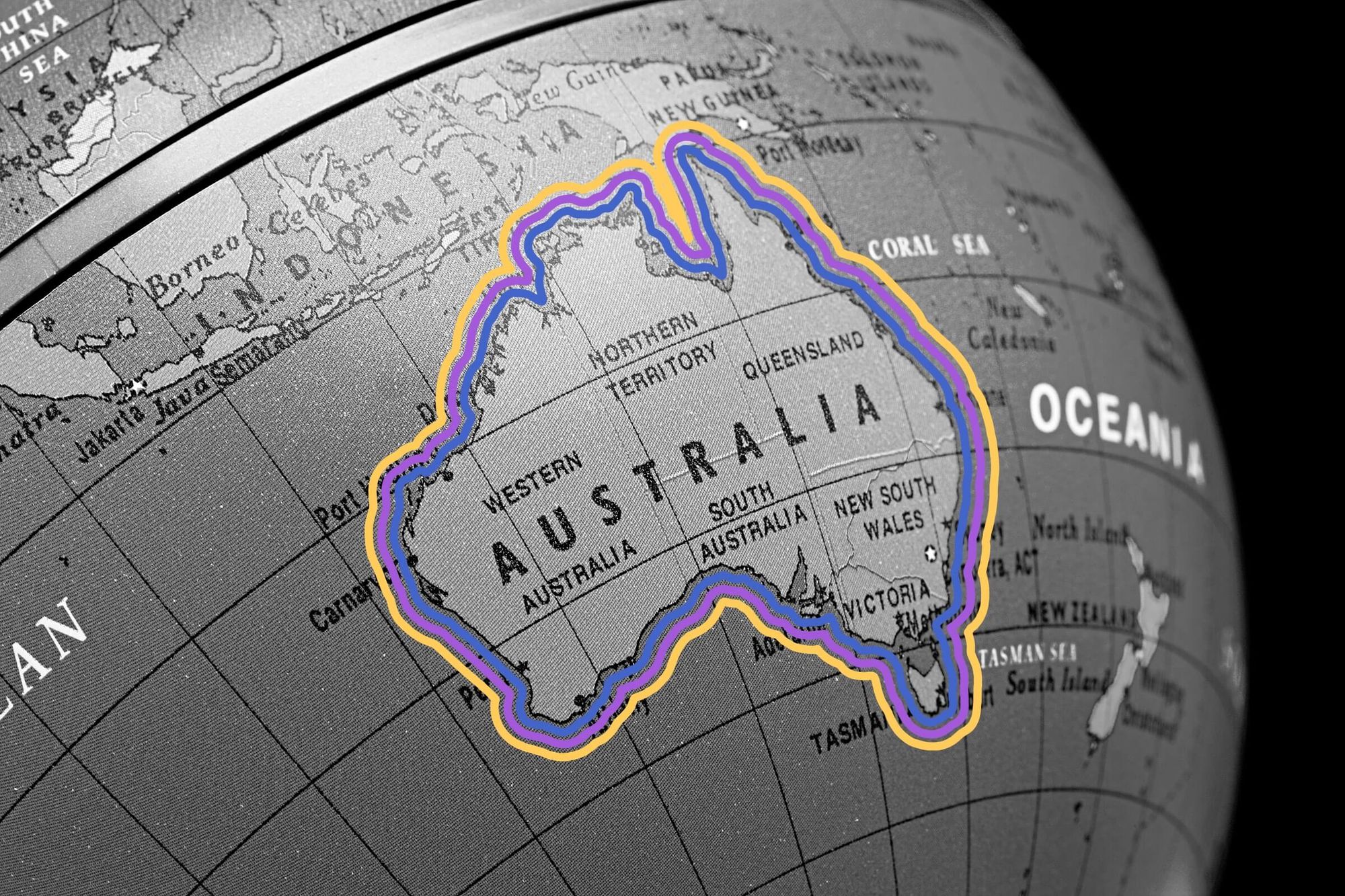

Nestled between the South Pacific and the Indian Ocean, Australia is the largest country in Oceania and the sixth-largest country in the world by land area. But that’s just the beginning when it comes to the many amazing things about this ancient land. From its one-of-a-kind wildlife species to the planet’s oldest civilization, here are seven fascinating facts that you might not know about the Land Down Under.
Australia Is Home to the World’s Oldest Civilization

When Dutch explorer Willem Janszoon landed in Australia in 1606, the first known European to do so, the continent had already been inhabited for tens of thousands of years by Aboriginal and Torres Strait Islander peoples. In 2016, an extensive DNA study by Cambridge University deduced that Aboriginal Australians are the world’s oldest civilization. Indigenous Australian and Papuan ancestral groups migrated to Sahul (a prehistoric subcontinent made up of present-day Australia, New Guinea, and Tasmania) about 50,000 years ago. Eventually, rising sea levels caused the separation of the islands, and forced the Aboriginal peoples into genetic isolation that developed unique communities.
Around 80% of Australia’s Fauna and Flora Is Unique to the Country

Australia has some of the cutest, most interesting, and most venomous animals on the planet. In fact, thanks to its isolated island geography, over 80% of the country’s plants and animals can only be found here. That includes the cuddly koalas, kangaroos, wallabies, and wombats that often feature high on tourists’ bucket lists. Many tourists also hope to spot the notoriously feisty Tasmanian devil, the world’s largest carnivorous marsupial, and the rainforest-dwelling, sound-mimicking lyrebird. Meanwhile, other national animals strike fear into tourists — Australia has approximately 100 venomous snakes, 12 of which can cause fatalities.
Uluru, the World’s Largest Monolith, Extends for Over 1.5 Miles Underground

The most sacred site in Aboriginal culture is the huge red sandstone monolith known as Uluru (or Ayers Rock). This landmark — the largest monolith in the world — is emblematic of the Australian Outback and rises 1,142 feet above its desolate desert surroundings. But what’s perhaps more impressive is that it’s estimated to extend for more than 1.5 miles beneath the Earth’s surface, almost like an iceberg on land. The Anangu people are the traditional owners of this 500 million-year-old rock, and consider it to be a resting place of ancient spirits.
Australia Has 19 UNESCO World Heritage Sites

From natural wonders to architectural masterpieces, Australia has an impressive 19 properties on UNESCO’s World Heritage List — more than either Greece or Turkey. You may already be familiar with some of them, as several rank among the country’s most popular tourist attractions, including the Sydney Opera House. Visitors can also get a taste of Australia’s natural beauty at places such as the Great Barrier Reef, Uluru-Kata Tjuta National Park, and Fraser Island. They can also catch a glimpse into the nation’s past as a penal colony at the Australia Convict Sites.
Highway 1 Is One of the Longest Highways on the Planet

With wide open roads running along meandering coastlines, cutting through vast deserts, and crossing mountainous terrain, Australia is a dream destination for a road trip. Highway 1 (nicknamed the Big Lap) is a 9,010-mile-long road that follows the coastline in one enormous loop. It connects almost all of Australia’s major cities, including Sydney, Melbourne, Adelaide, Perth, Darwin, and Brisbane. It’s also the second-longest highway in the world, after the Pan-American Highway. One of the many fascinating sections of the highway is the “90 Mile Straight.” This perfectly straight stretch passes through the flat, tree-less landscapes of the Nullarbor Plain between Balladonia and Caiguna, in Western Australia.
The First Australian Police Force Was Assembled of Convicts

When the colonization of Australia began in the late 1700s, there was no recognized formal police force. As a penal colony of Great Britain, there were more convicts than people with non-criminal backgrounds. Upon arrival in New South Wales in 1788, the Royal Navy Marines were given the task of policing, although it wasn’t a role that they wanted. Soon after, Governor Arthur Phillip selected 12 of the most upstanding convicts and created a civilian law enforcement department called the Night Watch. They continued as the Sydney Police until 1862, when they merged with other New South Wales colonial forces.
Australia Boasts the World’s Longest Golf Course

Golfers with time to spare can play an 18-hole, par-72 course that spans two Australian states. Starting in Kalgoorlie, Western Australia, the Nullarbor Links feature one hole at each participating town or roadhouse along the Eyre Highway, before finishing 848 miles away in Ceduna, South Australia. The course incorporates the rugged outback terrain of the Nullarbor Plain, and play can often be interrupted by kangaroos and wombats. Golfers should set aside four days to complete the entire course, and clubs are available for rent at each course (for those who don’t wish to carry them for the multi-day journey).
